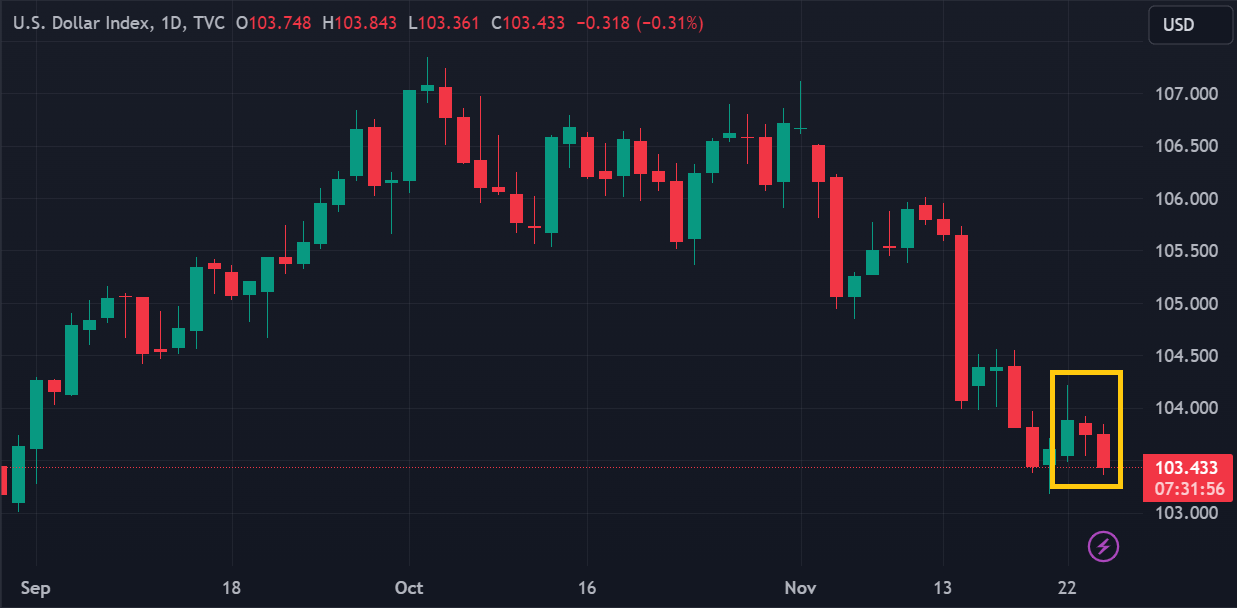The US dollar weakened due to tight market liquidity, worse US economic data, and strength in several other major currencies.
Market participants chose to pull back in light of the early close of the New York trading session in celebration of the Thanksgiving holiday in the United States. Consequently, the US Dollar Index (DXY) weakened around 0.3% to 103.40s on Friday (24/November).

S&P Global reported better Purchasing Managers' Index (PMI) scores for the services sector, but worse for the manufacturing sector in the preliminary November 2024 survey results. The US Services PMI score climbed from 50.6 to 50.8, which was better than the estimate of 50.4. The US Manufacturing PMI score slipped from 50.0 to just 49.4, whereas the previous consensus only anticipated a decline to 49.8.
The S&P Global report uncovered the fact that new order growth weakened, leading companies to reduce headcount. The employment sub-index fell below the 50.0 threshold for the first time since June 2020.
These data had a negative impact on the US dollar. Meanwhile, quieter market conditions also hurt the greenback.
"It's incredibly quiet, as you'd expect on the day after Thanksgiving, with liquidity still pretty thin, and volumes again on the light side," said Michael Brown, market analyst at Trader X in London. "I think what we're seeing is a classic case of the market taking the 'path of least resistance'."
Several mid-impact economic reports from overseas prompted a number of other major currencies to gain limited ground. The Chinese government announced new policies to support its property sector, which had a positive impact on the Aussie and Kiwi dollars which act as renminbi proxies in the forex market. Meanwhile, the euro was supported by the latest German consumer sentiment data which was more optimistic than market expectations.

 Dedicated FREE FOREX VPS
Dedicated FREE FOREX VPS Free FOREX Virtual Private Server
Free FOREX Virtual Private Server MT4 Demo Contest, Get $500
MT4 Demo Contest, Get $500 Sign Up for an Account, Claim 60% Deposit Bonus
Sign Up for an Account, Claim 60% Deposit Bonus Free MT4/MT5 VPS 2024
Free MT4/MT5 VPS 2024 Send E-mail and Get Free Merchandise
Send E-mail and Get Free Merchandise $1K Refer a Friend Bonus for Pepperstone Pro clients
$1K Refer a Friend Bonus for Pepperstone Pro clients Maximize Your Earnings with 100% Deposit bonus
Maximize Your Earnings with 100% Deposit bonus Trade to Win, $5,000 Monthly Demo Contest
Trade to Win, $5,000 Monthly Demo Contest Claim 30% + 15% Deposit Bonus from LiteFinance
Claim 30% + 15% Deposit Bonus from LiteFinance






